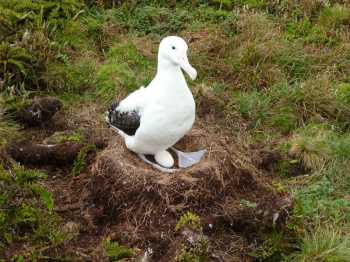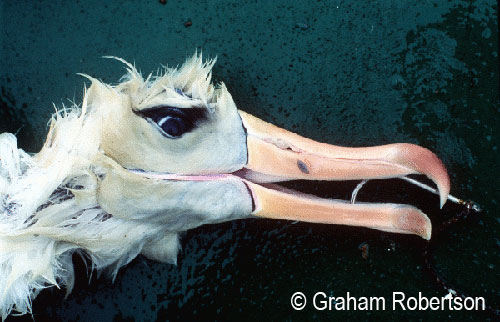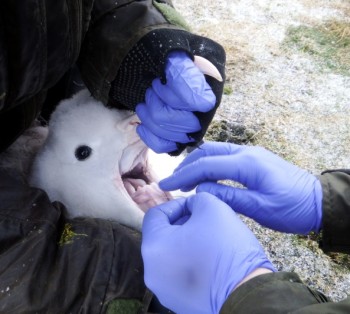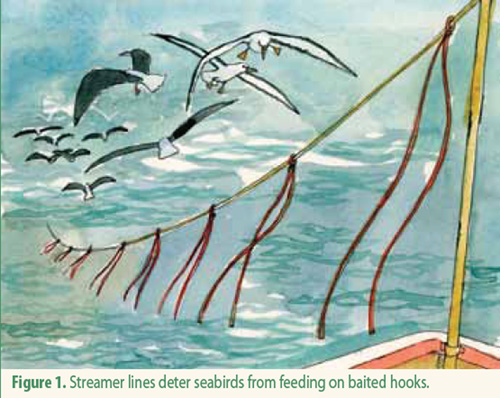Graham Parker (Parker Conservation, Dunedin, New Zealand) and colleagues have produced a final report for the New Zealand Department of Conservation (DOC) that details a survey of breeding Northern Giant Petrels Macronectes halli (Least Concern) at New Zealand’s Auckland Island Group over the 2015/16 austral summer; birds were found breeding at five localities.
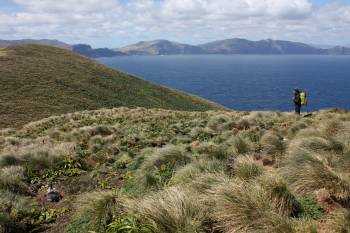
Northern Giant Petrels breeding on Disappointment Island, with the main island of Auckland in the background
The report’s executive summary follows:
“Northern giant petrels Macronectes halli are a large, southern hemisphere fulmarine petrel that face conservation threats both in the terrestrial and marine environment. Introduced mammalian predators at breeding sites cause nesting failures and in some instances may also depredate adults. In the marine environment Northern giant petrels are threatened by capture in longline and trawl fisheries, oil pollution, shooting by fishers for bait stealing and the effects of climate change.
The contemporary size and the population trends of Northern giant petrels on New Zealand islands are not known. Records of their numbers in the Auckland Islands are based solely on anecdotal evidence, and the most recent summary dates to the 1980s. We estimated the size of the Northern giant petrel breeding population and describe their spatial distribution in the Auckland Islands. Surveys counted 216 Northern giant petrel chicks on eight of the 15 islands visited in December 2015 and January 2016. Enderby Island had the largest breeding population, with 96 chicks counted. This represents a large increase in the population on Enderby Island compared to the only historic comprehensive count, in 1988, when just two Northern giant petrel chicks were counted. The second and third‐largest populations were on Disappointment, (38) and Dundas Islands (32). No breeding Northern giant petrels were reported from Rose and Friday Islands, where the species has previously been recorded breeding. Chicks were counted at two locations previously not reported to support breeding Northern giant petrels, at French’s Island and Crozier Point on the main Auckland Island. Applying crude correction factors based on breeding success at the nearest Northern giant petrel colony where these data have been collected, Macquarie Island, we estimate the breeding population in the Auckland Islands 2015‐2016 to be approximately 340 (range 310‐390) breeding pairs. We recommend future monitoring of the Auckland Island Northern giant petrel breeding population. Ideally island‐wide surveys would be repeated at regular 3‐5 year intervals. Enderby Island would be the ideal location for regular, annual counts of breeding birds.”
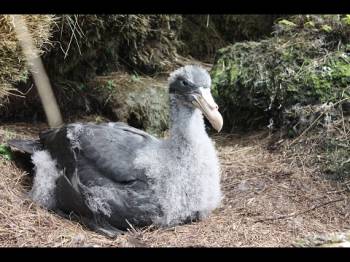
Northern Giant Petrel chick on Disappointment Island, Auckland Island Group
Photographs by Graham Parker
With thanks to Graham Parker.
Reference:
Parker, G.C., Muller, C.G. & Rexer‐Huber, K. 2016. Northern giant petrel Macronectes halli breeding population survey, Auckland Islands December 2015 – February 2016. Department of Conservation, Conservation Services Programme, Contract 4655‐4. Dunedin: Parker Conservation. 16 pp.
John Cooper, ACAP Information Officer, 04 August 2016

 English
English  Français
Français  Español
Español 